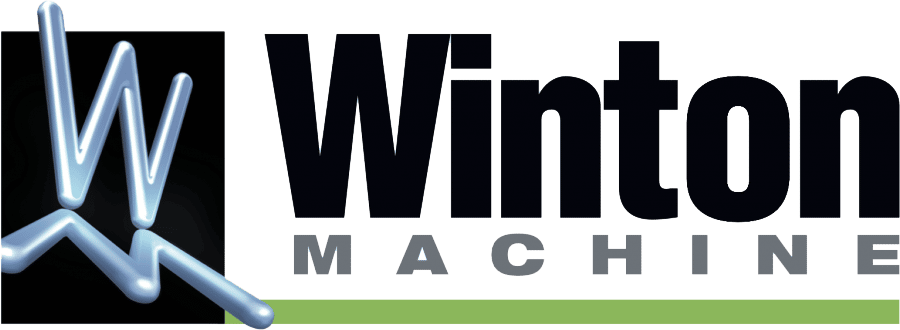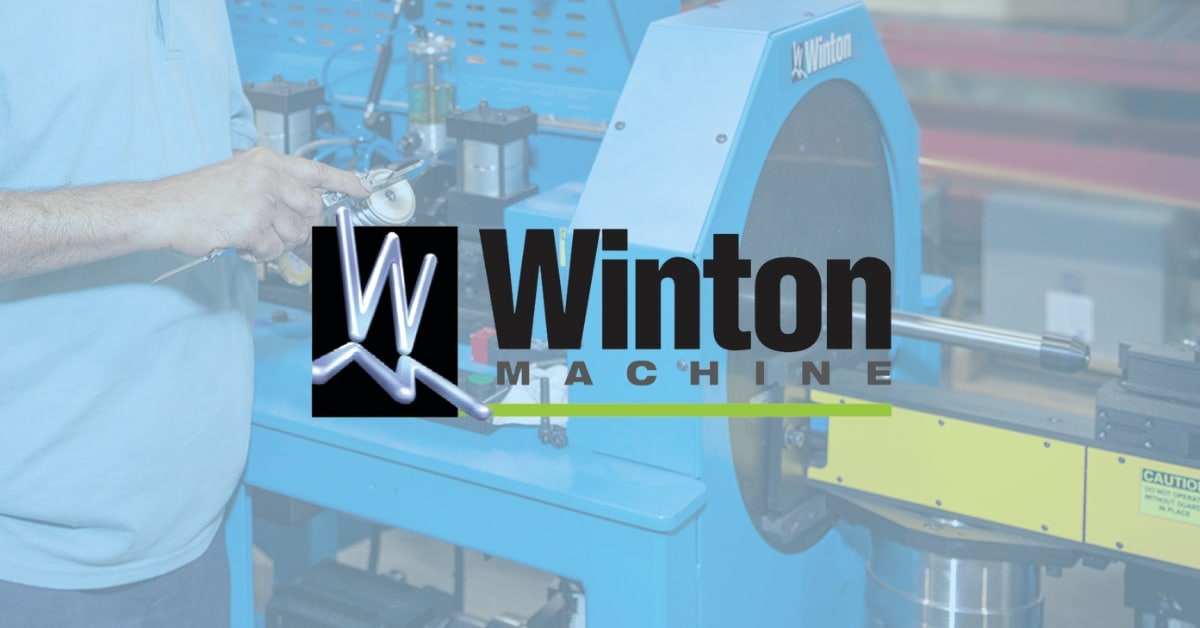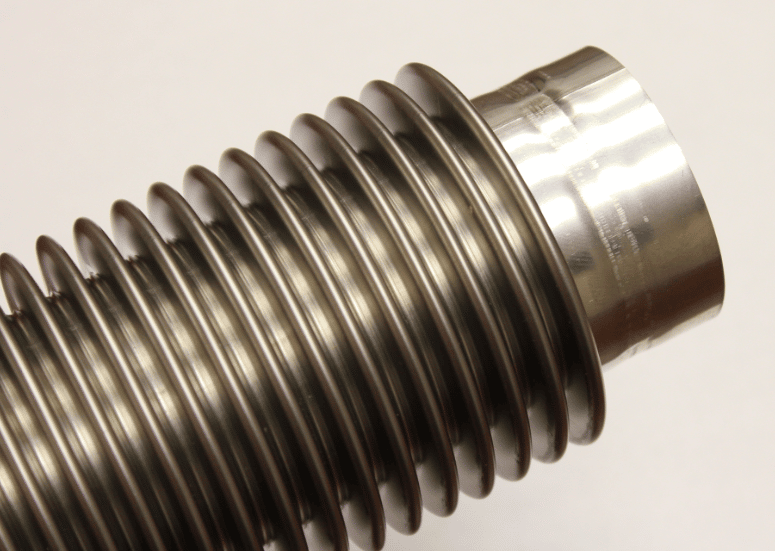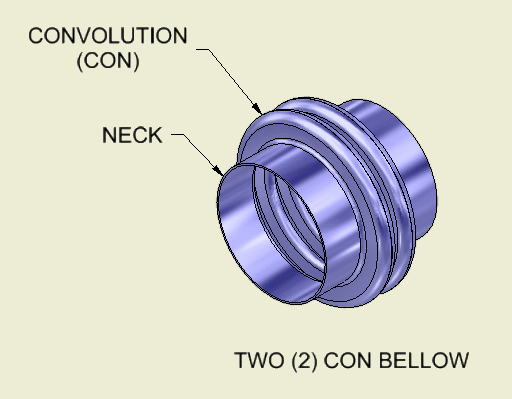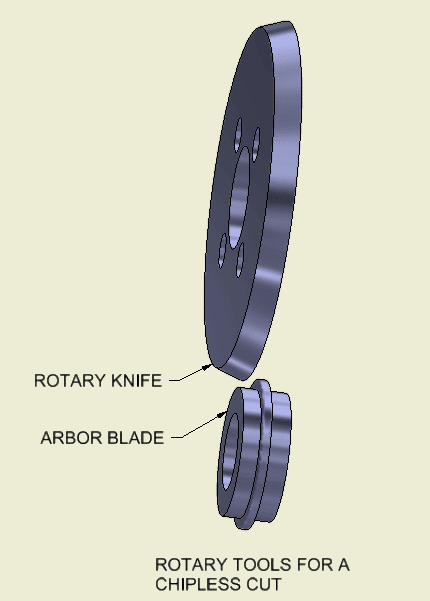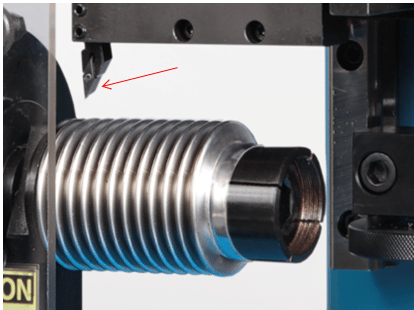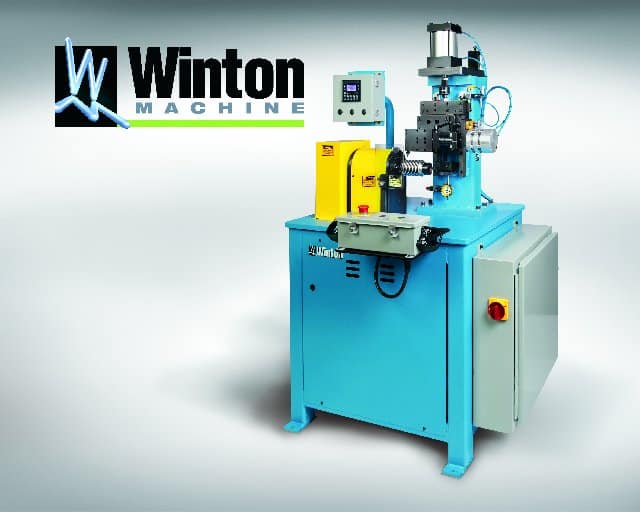Trimming the Neck on a Bellow
The world of tube forming covers many technologies such as hydroforming, laser cutting, analog to digital conversions and more. Quite often it covers machining as well. Sometimes forming and machining operations are combined in one machine.
In some cases, a tube forming machine also needs to be a CNC lathe machine on Monday and a rotary shear cutting machine on Wednesday thru Friday. This may be the case if you produce flexible bellows; as seen in the figure to the right
What are Bellows Used For?
Flexible bellows are found in many different verticals and applications such as automotive, aircraft, and laboratory instrumentation. In an automotive application, a bellow might be used to connect two other tubes where the bellow serves as a flexible member allowing for mechanical changes in a system. Any way you slice it, the process of fabricating a bellow often needs a secondary operation to trim the ends.
What is the “Neck” of a Bellow?
The raw ends of a bellow are sometimes referred to as the “necks.” The necks often get welded to a flange of sorts. This welding process requires the necks be trimmed with precision. The process best used to trim the necks is often a function of, yet not limited to, the material, material thickness, orientation of the required trim relative to the overall bellow geometry itself and the number of layers making up the overall wall thickness. The figure to the right shows what the neck is in relation to a formed bellow.
Making the Cut…
Using a Rotarty Shear Cut
A rotary shear type cut is an efficient way to trim the neck of a bellow. A rotary shear is similar to a pair of everyday scissors yet in a rotary configuration. With this type of cut, there are next to no excess chips as the cut is being produced. Often executed in a dry environment, a rotary shear cut requires about 2 to 7 seconds to trim a neck. The cycle time is fast because the cutting process, along with the tooling used to locate a part, most often locates and holds the bellow (one motion) as the scissor action is under way. The figure to the right shows a typical set of blades used to make a rotary cut.
Using a Lathe Cut
Sometimes the bellow needs to be trimmed on a face perpendicular to the neck itself. In this case a rotary shear type cut may apply or a lathe cut may apply. A lot depends on the material and material thickness of the bellow. If the material is too thin, then a shear cut may cause more problems than it is worth. This is where a lathe type cut comes into play. A cutting tool, such as the one shown to the right, is an excellent choice for cutting into the wall of a convolution.
In this situation, a flange is expected to be welded to the face of a bellow (convolution). By supporting the bellow, the chip producing action can slice thru the wall of a convolution leaving a clean surface for welding.
Just the Machine for the Job
Shear cut…lathe cut…which one to apply? As you can see, it is not always a straight forward decision. However, Winton Machine offers a perfect hardware/ software solution that is designed to cut either way. Using our proprietary software on our bellow cutoff machine (shown left), we can setup your new machine to make a shear cut or a lathe cut, your choice!

George Winton, P.E. designs and builds CNC tube fabrication equipment for Winton Machine in Suwanee, GA. He can be reached at gwinton@wintonmachine.com or 888.321.1499.
About the Machines We Build
All of our semi-rigid coax and tube fabrication machines at Winton are designed, manufactured, and tested in-house. We have a large line of standard products as well as the ability to engineer the best solution for our customer’s needs. Our experienced sales staff makes sure that our customers can justify their capital equipment investment by offering a solution that is exactly what they need in order to manufacture their parts. Please contact us today to discuss your project.

